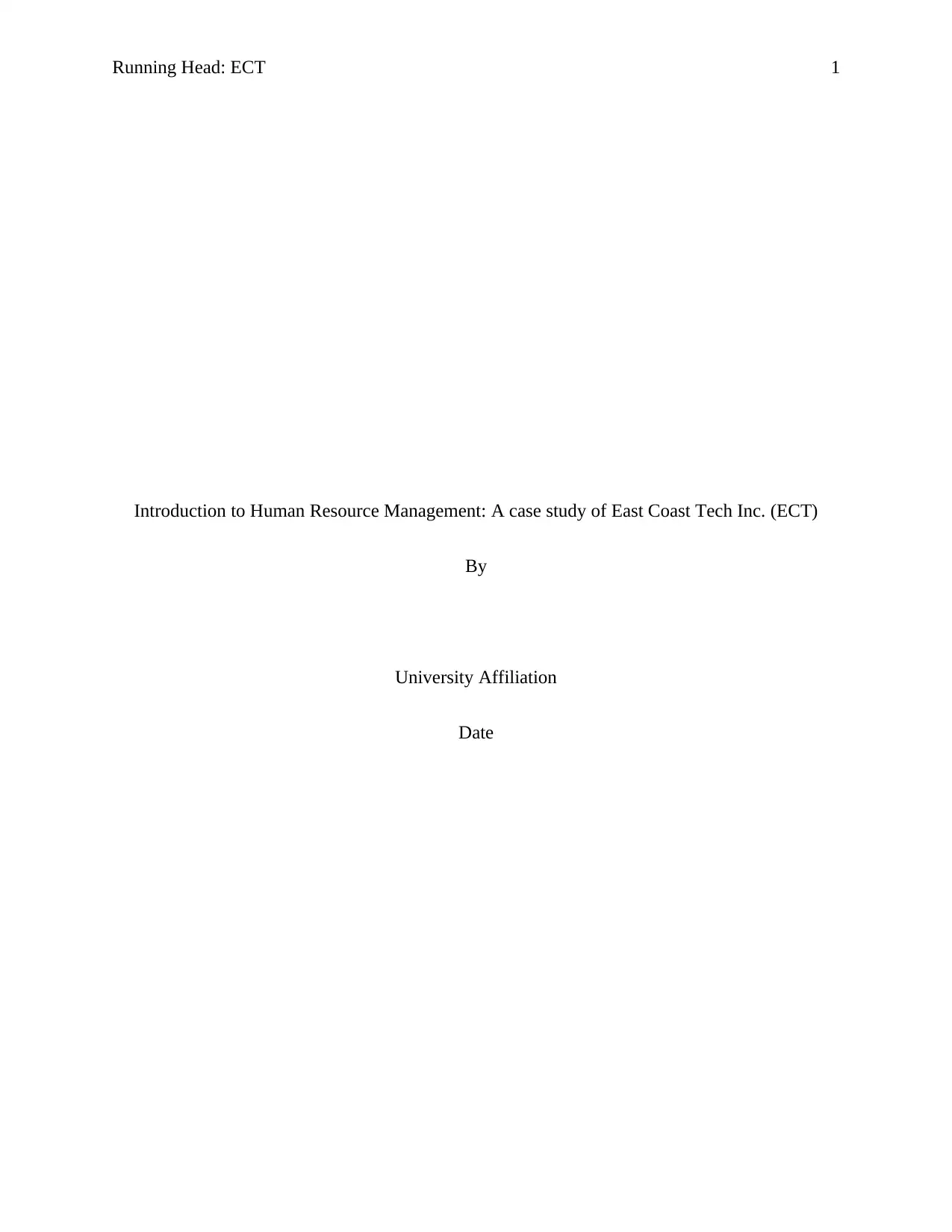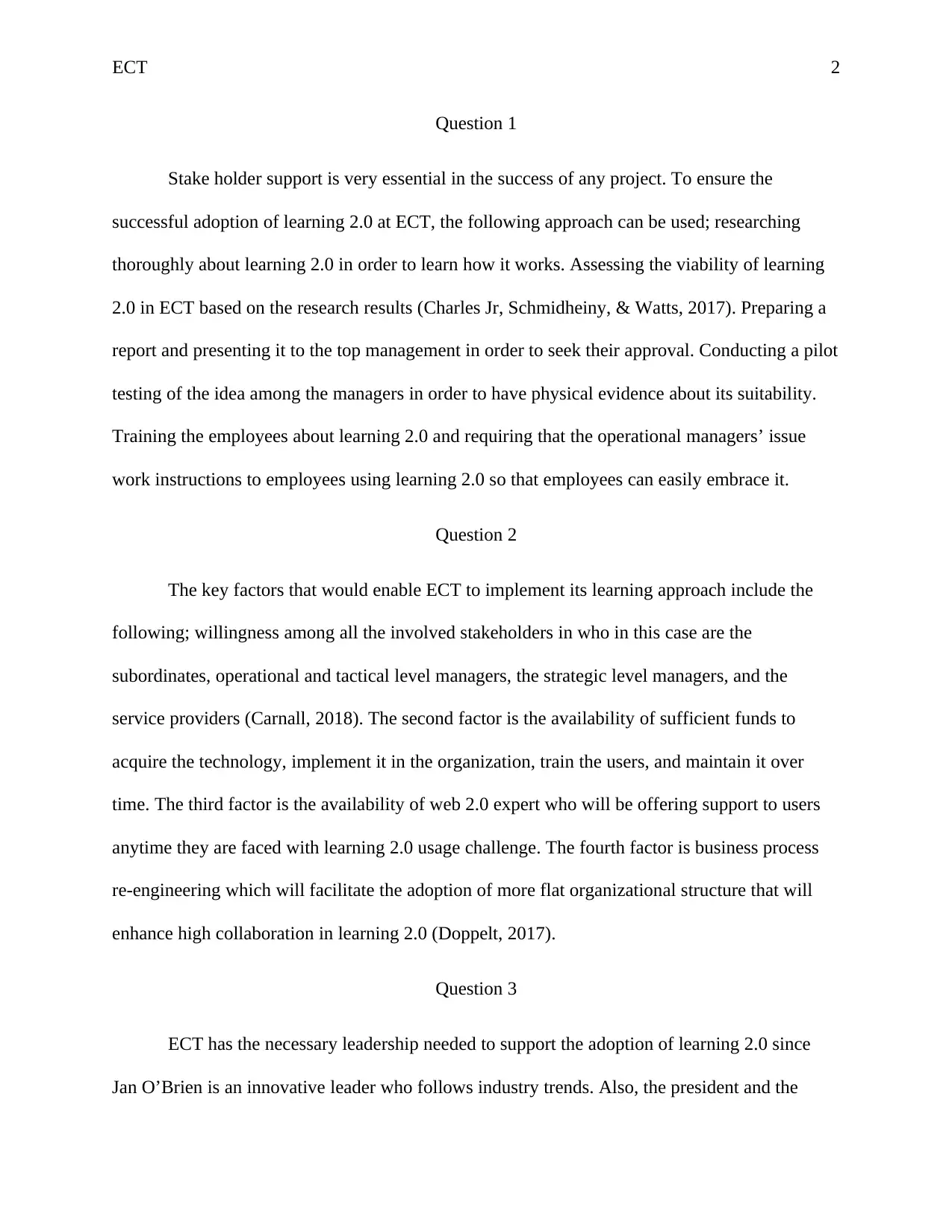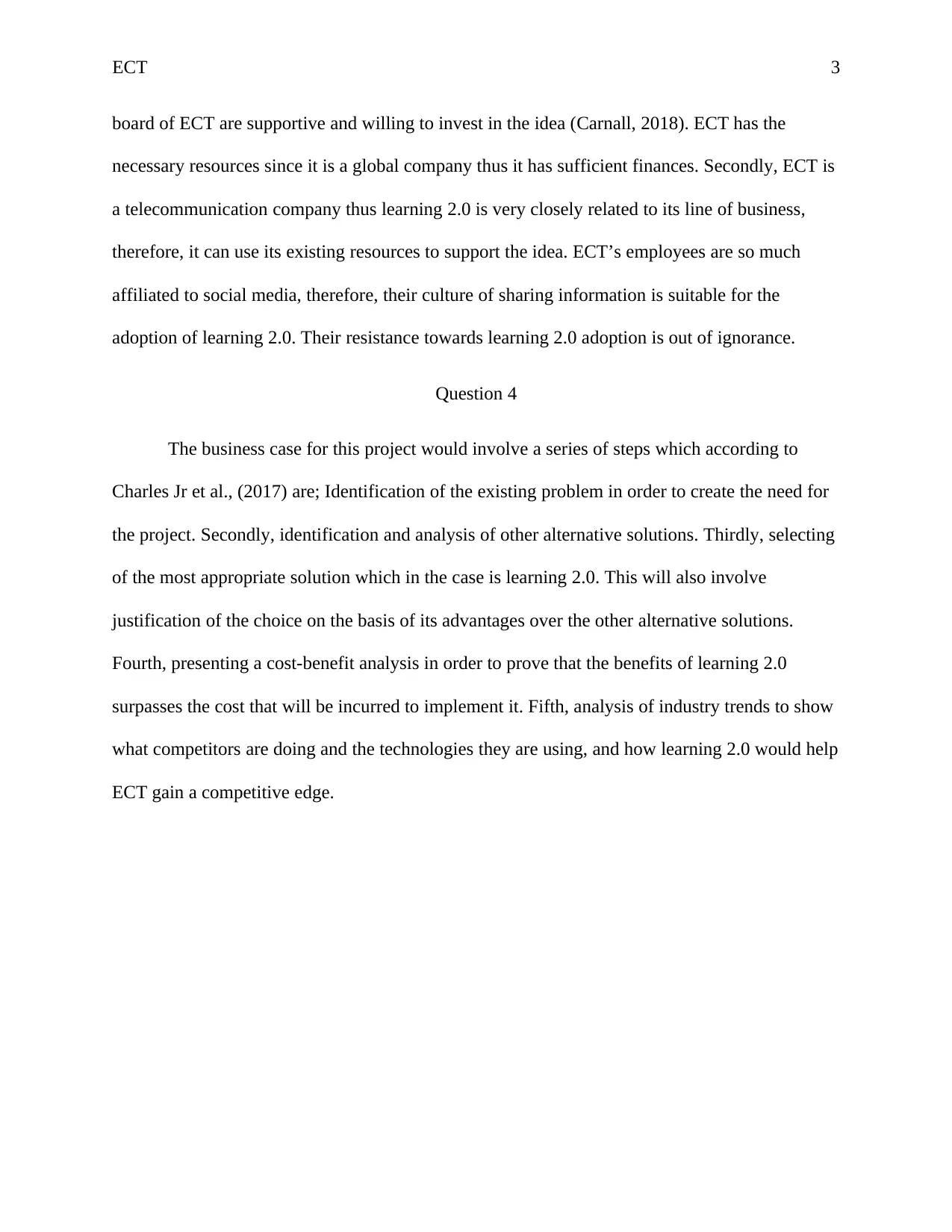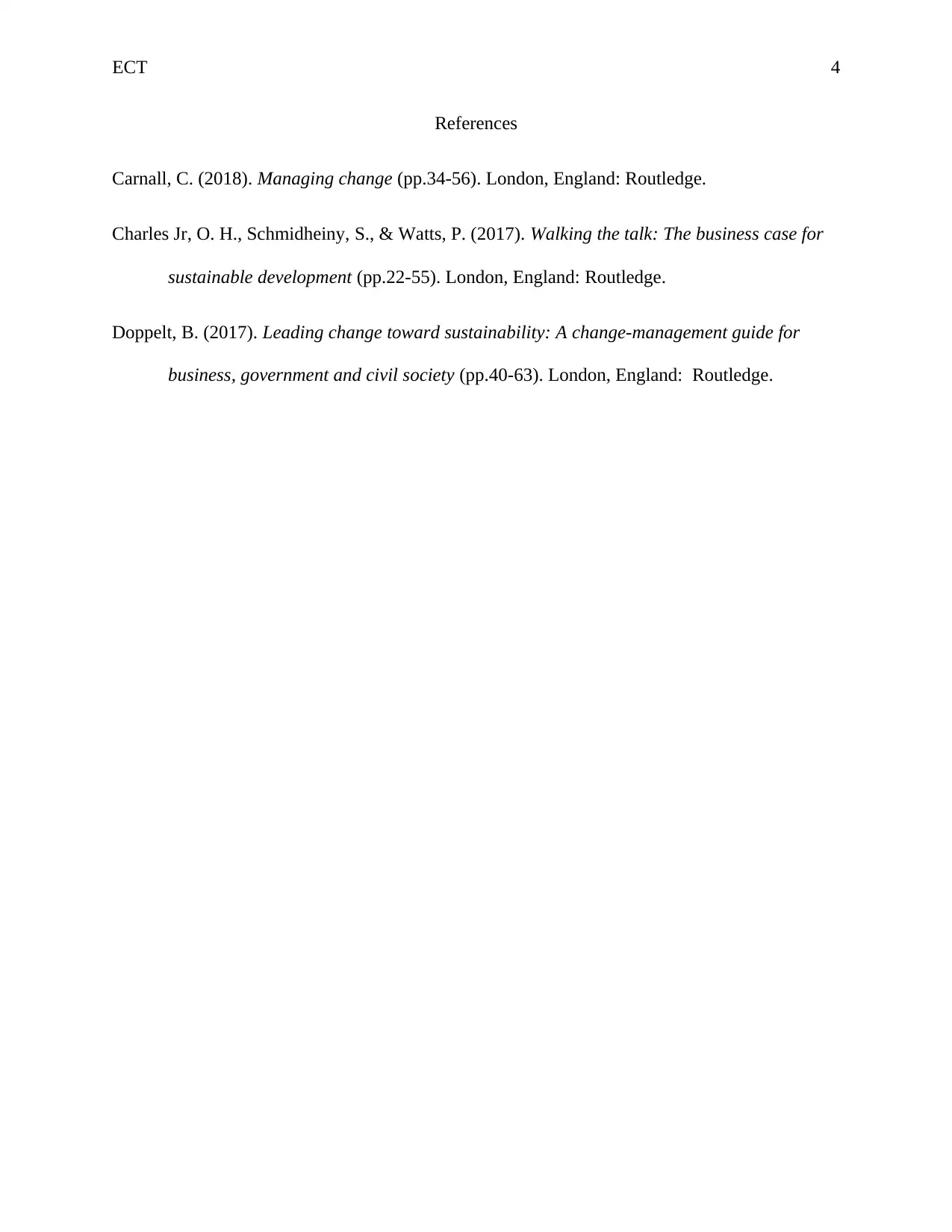Human Resource Management Case Study: Learning 2.0 Adoption at ECT
VerifiedAdded on 2023/05/30
|4
|690
|220
Case Study
AI Summary
This case study explores the implementation of Learning 2.0 at East Coast Tech Inc. (ECT) within the context of Human Resource Management. It addresses the importance of stakeholder support, key factors enabling the implementation of Learning 2.0, the necessary leadership and resources available at ECT, and the development of a business case for the project. The analysis covers aspects such as researching Learning 2.0, assessing its viability, seeking management approval, conducting pilot testing, and training employees. Key factors for successful implementation include stakeholder willingness, sufficient funding, availability of web 2.0 experts, and business process re-engineering. The study also highlights ECT's existing leadership, resources, and cultural alignment with social media as advantages, while addressing employee resistance as a challenge stemming from ignorance. The business case development involves problem identification, alternative solution analysis, justification of Learning 2.0, cost-benefit analysis, and competitive trend analysis. Desklib provides a platform to access this and similar solved assignments.
1 out of 4











![[object Object]](/_next/static/media/star-bottom.7253800d.svg)